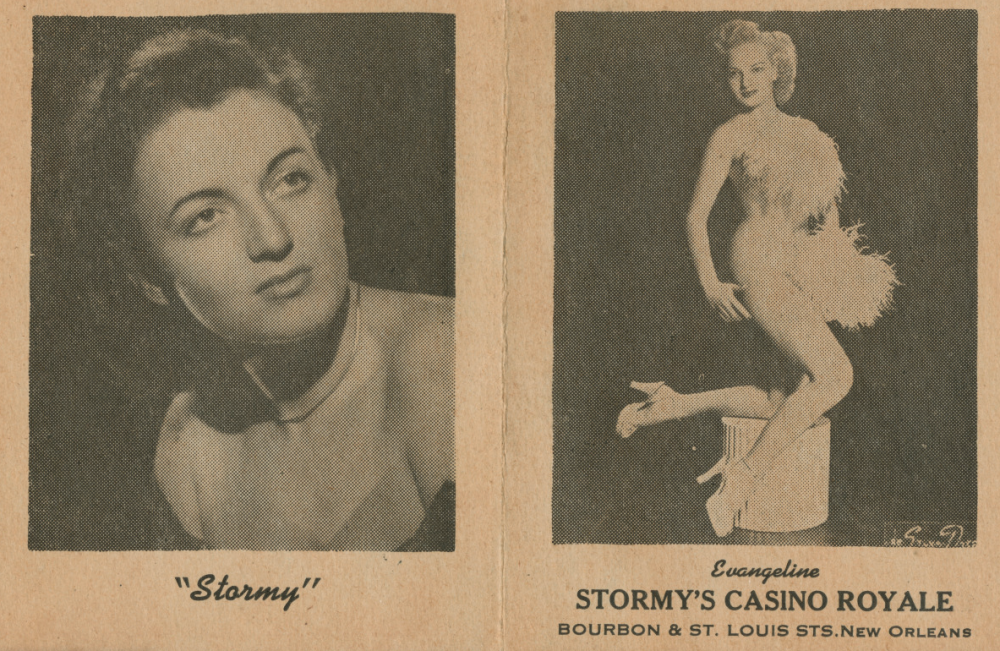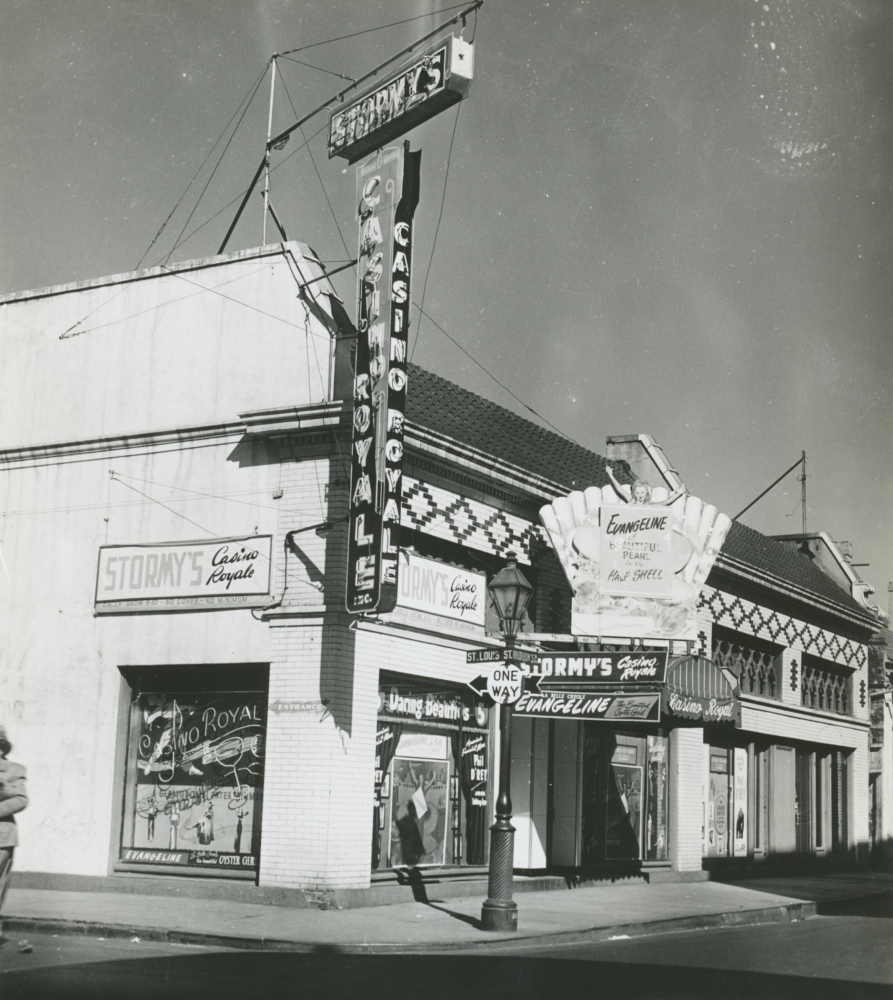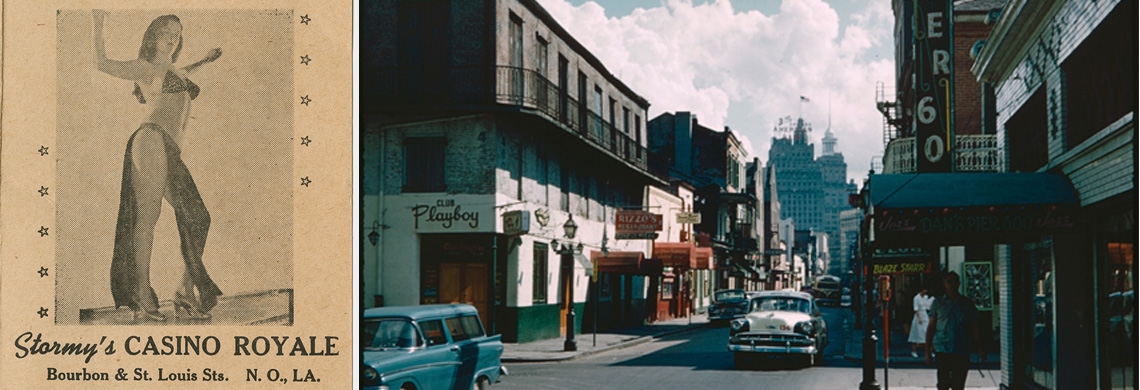Beginning in the 1930s, burlesque performances—vaudevillian variety shows featuring the striptease—swept the country. By 1950, there were tens of thousands of people involved in the burlesque industry, including dancers, musicians, actors, stage managers, and office personnel.
 A 1959 image shows the corner of Bourbon and St. Louis Streets. The building in the right foreground had formerly been Stormy's Casino Royale. (THNOC, gift of Eugene C. Major, 1990.135.9)
A 1959 image shows the corner of Bourbon and St. Louis Streets. The building in the right foreground had formerly been Stormy's Casino Royale. (THNOC, gift of Eugene C. Major, 1990.135.9)
This titillating form of entertainment found a home in New Orleans, with the majority of its more than 50 burlesque clubs residing on or near Bourbon Street. Signs for headliners such as Lilly Christine the Cat Girl, Kalantan the Heavenly Body, and Alouette LeBlanc the Tassel Twirler could be seen in front of venues such as Leon Prima’s 500 Club, the Sho-Bar, and Silver Frolics. In fact, burlesque was so profitable that some former music clubs changed their formats to include the striptease: the Mardi Gras Lounge, for example, installed a velvet swing used by dancers, and Casino Royale became Stormy’s Casino Royale in 1948, named for (but not owned by) its star act, Stacy “Stormy” Lawrence.
 A brochure includes images of Stacy "Stormy" Lawrence and Kitty West, who starred as "Evangeline the Oyster Girl." (THNOC, 2017.0103)
A brochure includes images of Stacy "Stormy" Lawrence and Kitty West, who starred as "Evangeline the Oyster Girl." (THNOC, 2017.0103)
Stormy was born into a carnival family in Pennsylvania and studied voice at Temple University before launching into show business. She began her New Orleans career in 1945 as a singer and band leader at the Casino Royale but by 1947 realized she had a knack for the striptease. Toward the end of 1947, she was featured on the cover of Pell-Mell, a student publication at LSU. Pat McIntyre, the editor of Pell-Mell, was nearly expelled for the issue, so when he decided to run for student president, Stormy enthusiastically packed up her band and headed to LSU to perform for his campaign on March 4, 1948.
Life magazine, in addition to local newspapers, documented the event, reporting that the LSU students did not appreciate Stormy’s talents as much as her New Orleans patrons did. Students stormed the stage and smashed the piano while Stormy, mid-act, was carried away and thrown into a nearby pond.
The incident at LSU didn’t hurt the reputation of Stormy’s club. It became known for featuring some of the most outlandish acts on Bourbon Street, including Evangeline the Oyster Girl, whose act involved a giant shell and pearl, and Divena the Sensational Aquatease, who stripped in a massive water tank. The March 1954 issue of Holiday magazine wrote that Stormy “is one of the Quarter’s more explosive performers. … She makes her entrance at Casino Royale to a fanfare of thunder and lightning and the music of Stormy Weather.”
 A 1949 image shows Stormy's Casino Royale. (Image courtesy of the Southeastern Architectural Archive, Tulane University Libraries, Walter Cook Keenan New Orleans Photographs)
A 1949 image shows Stormy's Casino Royale. (Image courtesy of the Southeastern Architectural Archive, Tulane University Libraries, Walter Cook Keenan New Orleans Photographs)
Stormy’s Casino Royale was shut down by 1957 due to a lawsuit between the club owner and his landlady, and by the 1960s it was Al Hirt’s jazz club, with no burlesque featured. Not much is known of Stormy after the closing of her eponymous club, except that she was a purchasing agent for Dixie Art Supplies at the time of her death in 1982.
A version of this story originally ran in THNOC's Historically Speaking column in the New Orleans Advocate.












